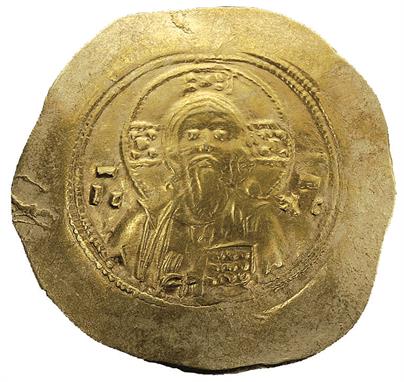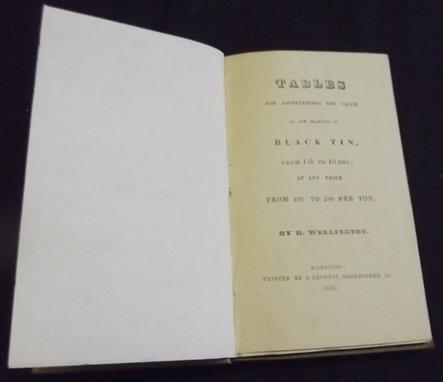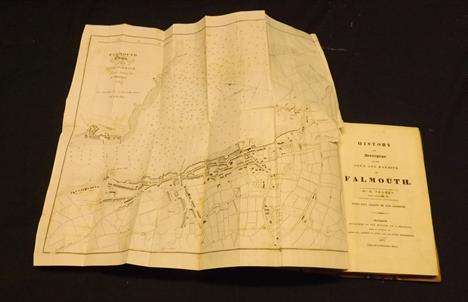Michele VII (1071-1078) - Histamenon Zecca: Costantinopoli - Fronte: busto nimbato del Cristo "Pantocrator" di fronte nell`atto di benedire - Retro: busto dell`Imperatore di fronte con un labarum nella mano destra e un globo crucigero nella sinistra - gr. 4,33 - (D.O.C. III-2/806/tipo 2d) (R Starting Price / Prezzo di partenza: €400
We found 297887 price guide item(s) matching your search
There are 297887 lots that match your search criteria. Subscribe now to get instant access to the full price guide service.
Click here to subscribe- List
- Grid
-
297887 item(s)/page
Michele VII (1071-1078) - Histamenon Zecca: Costantinopoli - Fronte: busto nimbato del Cristo "Pantocrator" di fronte nell`atto di benedire - Retro: busto dell`Imperatore di fronte con un labarum nella mano destra e un globo crucigero nella sinistra - gr. 4,33 - (D.O.C. III-2/806/tipo 2d) (R Starting Price / Prezzo di partenza: €400
Michele VII (1071-1078) - Histamenon Zecca: Costantinopoli - Fronte: busto nimbato del Cristo "Pantocrator" di fronte nell`atto di benedire - Retro: busto dell`Imperatore di fronte con un labarum nella mano destra e un globo crucigero nella sinistra - gr. 4,39 - (D.O.C. III-2/805/tipo 2d) (R Starting Price / Prezzo di partenza: €400
Michele VII (1071-1078) - Histamenon Zecca: Costantinopoli - Fronte: busto nimbato del Cristo "Pantocrator" di fronte nell`atto di benedire - Retro: busto dell`Imperatore di fronte con un labarum nella mano destra e un globo crucigero nella sinistra - gr. 4,35 - (D.O.C. III-2/802/tipo 2d) (R Starting Price / Prezzo di partenza: €250
80 Lire 1821 Zecca: Torino - Fronte: effigie del Re a sinistra - Retro: stemma di Casa Savoia coronato e ornato dal Collare dell`Annunziata fra due rami di alloro - Di grande rarità - Qualità molto buona, probabilmente uno dei migliori apparsi sul mercato - (Bol. n. R Starting Price / Prezzo di partenza: €30000
A COLLECTION OF LEICA LEITZ CAMERA AND LENSES, comprising of a Leicaflex camera ,marked `1999371` , with a Summicron -R 1:2/50 lens, a further Leicaflex camera, marked `2034092`, with a Summicron -R 1:2/50 lens, together with a Leica R 3 Electronic, marked `2942340`, with a Summicron -R 1:2/50 lens, a Leitz Wetzlar Elmarit - R lenses and two Leitz Wetzlar Elmaron lenses (6)
Guillim (John) A DISPLAY OF HERALDRIE...bound with AN EXACT REGISTER OF ALL THE KNIGHTS OF THE GARTER... ruled in red throughout, woodcut vignettes throughout, many with contemporary and later hand-colouring, gather Q with page loss, repaired and restored in contemporary hand, contemporary ink ownership signature on front free endpaper, some mainly marginal damp staining, contemporary sprinkled panelled calf ruled in gilt, some cracking to base of spine, 4to, T.R. for R. Blome, 1660. See illustration
Ensemble de 8 bouteilles 1 bouteille VOUVRAY Les Fouinières, R. Boucq1950 (moelleux) 1 bouteille VOUVRAY Le Paradis, R. Boucq1955 (moelleux) 2 bouteilles VOUVRAY Les Fouinières, R. Boucq1954 (sec) 2 bouteilles VOUVRAY Les Fouinières, R. Boucq1952 (demi-sec) 1 bouteille VOUVRAY Le Paradis, R. Boucq1953 (moelleux)1 bouteille VOUVRAY Les Fouinières, R. Boucq1955 (demi-sec)
Roger CAPRON (1922-2006) Sculpture en terre chamottée représentant une femme bras relevés, cuisson raku, émaux polychromes, soclage métal. Signature d’un cachet "R. Capron". Haut. 38,4 cm Roger CAPRON (1922-2006) An enamelled chamotte clay sculpture shaping a woman with arms up, raku cooking, metal base. Signed. Height. 15 1⁄8 IN. Haut. 38,4 cm
Vladimir KAGAN (né en 1927) "VK" Chaise longue méridienne, 1999, piètement quadripode zoomorphe en fonte d’aluminium, structure en bois tendu de mousse recouverte d’un velours frappé gris bleu passepoilé. Plaque du Studio "Kagan The New York Collection". Haut. 95 cm - Larg. 69 cm - Prof. 156 cm Provenance : Collection de John R. Eckel, Jr, USA. Bibliographie : Vladimir Kagan, "The Complete Kagan : Vladimir Kagan : a Lifetime of Avant-garde Design", Pointed Leaf Press, New York, 2004, pp. 204-205. Vladimir KAGAN (né en 1927) A cast aluminum and velvet upholstery "VK" deck chair, 1999. Metal studio label. Height. 37 3⁄8 IN. - Length. 27 1⁄8 IN. - Width. 61 3⁄8 IN. Haut. 95 cm - Larg. 69 cm - Prof. 156 cm Provenance : Collection de John R. Eckel, Jr, USA. Bibliographie : Vladimir Kagan, "The Complete Kagan : Vladimir Kagan : a Lifetime of Avant-garde Design", Pointed Leaf Press, New York, 2004, pp. 204-205.
*§ KOMAR, VITALY and MELAMID, ALEXANDER (B.1943 and B. 1945) Lenin Hails a Cab in New York, from the Series "Monumental Propaganda/Lenin`s Tomb", signed, inscribed with the artists` names, titled and dated 1993 on the reverse. Oil and tempera on canvas, 102 by 76 cm. Provenance: Private collection, USA. Authenticity of the work has been confirmed by Vitaly Komar. Related literature: For the other version of the present lot, see The New Yorker, New York, 12 July 1993, reproduced on the cover. Exhibition catalogue, It’s the Real Thing: Soviet and Post-Soviet Sots Art and American Pop Art, Minneapolis, Frederick R. Weisman Art Museum, 1998, reproduced on the cover. Athanor XXIII, Tallahassee, Florida State University, Department of Art History, 2005, reproduced on the cover. Lenin Hails a Cab in New York is an iconic piece by Komar and Melamid painted in 1993, a period of political unrest and popularized destruction of the past in Russia. With the dissolution of the Soviet Union in 1991 and the October Putsch in 1993, Russia embarked on the path to its newest history, taking down and destroying Soviet monuments, symbols and signs. Together with Independent Curators, Komar and Melamid, by that time already living in New York, began the Monumental Propaganda project in an attempt to preserve the historical lessons of the Soviet past for future generations. More than 200 Russian and Western artists participated in the project, creating artwork on theme of the preservation of monuments, which received extensive press coverage and subsequent public resonance in Russia. The present lot is the first, original version of this composition. Despite its relatively small size, the canvas possesses monumental, almost mural-like qualities. The tall figure of Lenin, as if defying the streets of New York, is echoed by the Chrysler Building and the red flag of the fast-food eatery in the background – the new symbols of the capitalist world dressed in communist symbols: the red of the MacDonald’s flag and red Kremlin star on top of the Chrysler building. This juxtaposition is what creates a strong and powerful image of its time, so much so that another version of this canvas was published on the cover of the New Yorker Magazine in 1993. Addressing the issue of iconoclasm, the present work depicts Lenin in a pose familiar from multiple monuments across the major public spaces in Russia. Taking the iconic image out of its usual context and placing Lenin on the streets of New York transforms him from a leader of revolution to a regular passer-by engaged in the simple, humdrum act of hailing a cab. The narrative of the picture is developed though the collision of a real character with his utopian surroundings, addressing nostalgia and banality through mockery and humor. Through this unique interpretation, Komar and Melamid reveal all that stands behind Moscow Conceptualism of the 20th century. To quote Professor A. Leigh-Perlman of Montclair State University in Future Ruins: Time, Memory and History in the Work of Komar and Melamid: “Komar and Melamid’s art from the past three decades has been characterized by many important themes and has utilized a wide variety of media and subject matter. As vanguards of Moscow’s particular brand of Conceptualism, they have helped close this dramatic century with a temporal concern for the past as it colors our present and guides us into the future. The two-fold process of remembering and repeating acted out in much of their work serves to solidify the chance of recognizing oppression when it arises in the future. This process of nostalgic repetition may be uncomfortable, we may be confused as to whether we should laugh or cry, but we are left with the monumental sense that we must never forget. Embarking on the future, we need not fear how coming generations will interpret us, as long as we know that the memories of history have taught us the lessons of the past.”
R H Penton (1882-1960) (professionally known as Howard Penton), was born in Barrow in Furness. A competent artist from an early age, he began his career by covertly sketching the launch of the Japanese Imperial Fleet Battleship 'Mikasa', as cameras were banned from proceedings. He sent his sketches for the attention of the London Press. A noted marine and landscape painter, he was a founder member of the Langham Sketching Club, and the Wapping Group of Artists, exhibiting at the Royal Academy of Arts, the Royal Watercolour Society and the Royal Society of Marine Artists. R H Penton (1882-1960), A NOVA-SCOTIAN DISCHARGING TIMBER AT A NORTH-WESTERN SEAPORT,1900 Signed, oil on canvas 45.5 x 61cm
R H Penton (1882-1960), GREAT FIRE OF LONDON MONUMENT WITH THE CHURCH OF ST MAGNUS THE MARTYR Signed, pencil 10.5 x 17cm; STREET SCENE Pencil; with two limited edition etchings, No.2/200 and 22/200, and an Arthur Welford engraving, inscribed 'To my friend Howard Penton', plate 11 x 2.5cm (5)
A Dresden porcelain yellow vase, with goat mask handles, the main body decorated with figures of courting couples to both sides on circular foot, printed `R` beneath, 29cm high, together with a similar Continental bottle vase, a Dresden shaped plate, a pair of other gilt highlighted plates decorated with flowers and figures and a coffee can and saucer. (7)
A Masonic WWI commemorative medal, stamped to the reverse `Worshipable Brother R Frisby` A Royal Masonic Hospital Grand Patron jewel and a mounted medal attached to a collar with the inscription "Honourable testimonial of Masonic charity and benevolence. Instituted by H.R.H AUG FRED Duke of Sussex M.W Grand Master.
A cased R K Dresden tea service, comprising of a teapot, milk jug, two handled sugar bowl and four cups, together with a tray, each transfer printed and centred with an oval with courting couple and child, with a stylized shell and scroll outline, printed blue marks beneath, in fitted box,the tray 46cm wide.
A quantity of Continental cabinet cups, saucers, trios, etc, to include Dresden, a heavy gilt highlighted cup and saucer with courting couple and entwined handle, gilt highlighted floral trio, the egg gilt highlighted floral trio `F` and crown mark beneath, various R K Dresden shaped dishes, Dresden trios, shaped leaf dish, shaped AR leaf dish, etc and a Vienna vase and cover of squat bulbous form inverted stem and gilt highlighted domed lid, 18cm high. (a quantity)
An R K Dresden lidded bowl of large proportion, with domed cover on blue ground broken by floral gilt highlighted panels, the body decorated with further panels of courting couples, on quadruple feet with blue printed marks beneath, 27cm high, together with a Continental porcelain lid headed by a cherub. (2)
A Continental sardine dish, of typical form, with fish handle, an A R Dresden triangular cup and saucer, a gilt highlighted cabinet cup, a yellow gilt highlighted cup and saucer, an imari teapot stand, probably 19thC and an early 19thC English pink lustre dish of circular form, 20cm diameter. (9)
-
297887 item(s)/page


























































